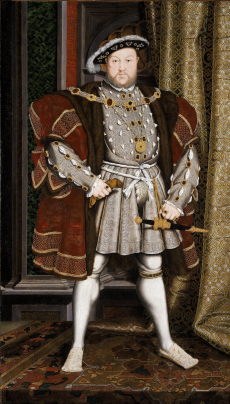
Email: EllaTournes@bexleygs.co.uk
Total Article : 45
About Me:Sixth form student currently studying English Literature, Drama and Theatre Studies, Classical Civilisation and History.

The role of Henry VII in the religious Reformation of England during the Tudor period is often overestimated. By the time Edward VI took over the throne in 1547, the doctrine of the Church of England was full of inconsistencies and compromises between the traditional doctrine of Catholicism, and the newer, unchartered doctrine of Protestantism, barely held together by treason and heresy laws. Although Cramner’s English Litany had been authorised in 1545, services were, for the most part, still carried out in Latin. Emphasis was still put on the Lord’s Prayer and the Ten Commandments. The idea of the body of Christ (the bread) and the blood of Christ (the wine) being mutually exclusive concepts was still popular – an idea lending itself more to the Catholic doctrine of transubstantiation than the Lutheran consubstantiation, a theological doctrine that emphasises the coexistence of the body and blood. The laity was still expected to confessions, and clergy members were no longer permitted to marry by 1547. Arguably, the only real move towards Protestantism in its pure sense, had been the Dissolution of the Monasteries. Churches still had the aesthetics associated with Catholicism – lavish decoration and intricate stained-glass windows, priests in extravagant vestments, separated from the rest of the Church in an idolised role.
By the end of Edward VI’s reign, the face of English religion changed. Key aspects of Catholicism were annihilated, as a result of carrying out the Act of the Six Articles, and the emergence of a definitive, distinct form of Protestantism, enforced by the Acts of Uniformity and the First and Second New Prayer Books. Protestantism became something definite and perceptible, as opposed to the confused conglomeration of doctrines it had been before.
The religious changes imposed upon the people between 1547 and 1553 were not accepted easily. People were not used to change and the religious changes were very significant for a devout, solely Catholic country, and the imposition of them caused revolts, including the Western Rebellion, often referred to as the ‘Prayer Book Rebellion’. The uncertainty and unease that the religious changes caused have led modern historians to see the period of Edward VI and Mary I’s reign as a ‘Mid-Tudor’ Crisis.
When considering if the religious changes made under Edward VI were the most significant, there are two main lines of argument. The orthodox interpretation, adopted by historians like Haigh, Loades and Scarisbrick, supports the idea that the religious changes made under Edward VI were made quickly and without consideration for the opinion of the general public – more of a radical imposition than a change. This interpretation also suggests that the religious changes were the result of efforts made by key individuals (like Somerset and Northumberland). However, the revisionist interpretation, adopted by historians like Duffy and Jordon, supports the idea that the changes were moderate in their nature, were introduced with a degree of gradualism, and were more or less welcomed by the general public. The religious changes made under Edward VI are a huge area of historical debate.
Theirs is no doubt that significant changes were made between 1547 and 1553. The factors that lend themselves towards judgement of extent of significance include the beliefs of Edwards VI himself, the willingness of key individuals (like Somerset, Northumberland and Cramner) to pursue reformative religious policies, the attitude among the English clergy and European Reformers, both as a holistic collective and as individuals, and the degree of support within the population towards the new ideas and beliefs. The significance of these dangers, and the extent of change overall, can only be truly assessed when compared to what happened in their immediate past and their immediate future – in short, comparing the religious context of the reign of Edward VI to the religious contexts of Henry VIII, Mary I and Elizabeth; by assessing religious changes in their entirety from 1485 to 1603.
Source:
https://www.google.co.uk/search?q=tudor+religion&espv=2&biw=1242&bih=557&source=lnms&tbm=isch&sa=X&ved=0ahUKEwjLoO-I4KrPAhVhKsAKHZFrB7QQ_AUIBigB#tbm=isch&q=henry+viii&imgrc=BhQR9kaedTElTM%3A

0 Comment:
Be the first one to comment on this article.